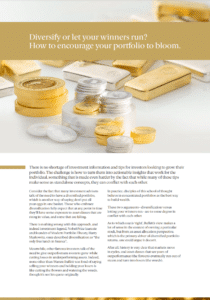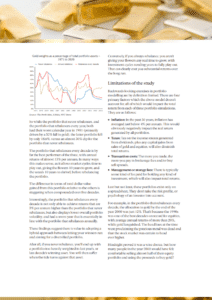Content provided by The Perth Mint
Written by Jordan Eliseo, Manager – Listed Products and Investment Research, The Perth Mint
There is no shortage of investment information and tips for investors looking to grow their portfolio. The challenge is how to turn them into actionable insights that work for the individual, something that is made even harder by the fact that while many of these tips make sense as standalone concepts, they can conflict with each other.
Consider the fact that many investment advisers talk of the need to have a diversified portfolio, which is another way of saying don’t put all your eggs in one basket. Those who embrace diversification fully expect that at any point in time they’ll have some exposure to asset classes that are rising in value, and some that are falling.
There is nothing wrong with this approach, and indeed investment legend, Nobel Prize laureate and founder of Modern Portfolio Theory, Harry Markowitz, once described diversification as “the only free lunch in finance”.
Meanwhile, other famous investors talk of the need to give outperformers room to grow while cutting losses in underperforming assets. Indeed, none other than Warren Buffett was fond of saying selling your winners and holding your losers is like cutting the flowers and watering the weeds, though it’s not his quote originally.
In practice, disciples of this school of thought believe in concentrated portfolios as the best way to build wealth.
These two arguments – diversification versus letting your winners run – are to some degree in conflict with each other.
As to which one is ‘right’, Buffett’s view makes a lot of sense in the context of owning a particular stock, but from an asset allocation perspective, which is the primary driver of diversified portfolio returns, one could argue it doesn’t.
After all, history is very clear that markets move in cycles, and asset classes that see years of outperformance (the flowers) eventually run out of steam and turn into losers (the weeds).
What is an investor to do?
Below we look at three hypothetical portfolios comprised of just two asset classes, equities (using the S&P 500 to proxy returns) and gold, highlighting the returns and risks over a 50-year time period from 1971 to 2020.
Note that we’ve used a starting balance of $10,000 evenly split between the two asset classes, with the three portfolio simulations as follows:
- Never rebalancing the portfolio.
- Rebalancing back to 50% allocations each year.
- Rebalancing back to 50% allocations each decade.
The table below highlights the results, from both a return and risk perspective for the three portfolios.
The table makes it clear that the pure buy and hold approach is the lowest returning strategy of the lot, generating returns of just under 10% per annum over the past five decades.
The portfolio that embraces annual rebalancing is the second-best performer, generating returns of just over 10.5% per annum, and also exhibits much lower volatility than the other two portfolios.
This is because the annual rebalancing back to a 50% weight to each asset (in practice selling a bit of last year’s flowers and buying a bit of last year’s weeds) means the maximum allocation it ever has to either asset class is much lower than the other two portfolios.
This can be seen in the chart below, which looks at the allocation to gold for each portfolio over time. Note how the portfolio that rebalances once a decade, and the portfolio that never rebalances, had maximum gold allocations of almost 90% by the end of the 1970s, and just over 10% towards the end of the 1990s. The portfolio that rebalances every year never gets to those extremes.
To see the chart, continue reading the analysis on the three portfolio simulations and discover ways to encourage your portfolio to bloom, click below to download the full report, or visit The Perth Mint’s webpage here.


Content provided by:
Disclaimer: Any opinions expressed in this article are subject to change without notice.
The information in this article and the links provided are for general information only and do not contain all information that may be material to you making an investment decision.
The Perth Mint is not a financial adviser and nothing in this article constitutes financial, investment, legal, tax or other advice.
Before making an investment decision you should consider whether it is suitable for you in light of your investment profile, objectives, financial circumstances and the merits and risks involved. You should consider seeking independent financial advice to check how the information in this article relates to your unique circumstances.
All data, including prices, quotes, valuations and statistics included have been obtained from sources The Perth Mint deems to be reliable, but have not been independently verified by The Perth Mint and we do not guarantee their accuracy or completeness.
The Perth Mint does not accept any liability, including without limitation any liability due to any fault, negligence, default or lack of care on the part of The Perth Mint, for any loss arising from the use of, reliance on, or otherwise in connection with the information contained in this article.



